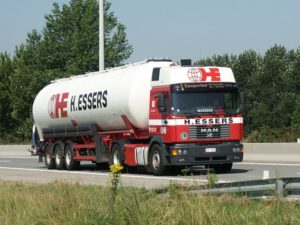
One of the most common and harmful myths of auto safety in the US is that large vehicles are necessary for safe driving, and that they provide much more protection than smaller vehicles. I’ve addressed this myth before in articles such as My Prius is safer than your large SUVs and even larger pickup, How small cars make us all safer, and more recently, in A Cruze is as safe as a Suburban and A CR-V is as safe a as a Pilot. Today we’re going to revisit the myth by comparing death rates of some of the latest small cars on the road to those of some of the latest and largest cars, minivans, SUVs, and pickup trucks money can buy. All of the data comes from the most recent IIHS status report with driver death rate data, Volume 52, No. 3.
Small cars with very low driver death rates, or the safest used small cars money can buy
2011-2014 Chevrolet Volt – 7 driver deaths (0-39)
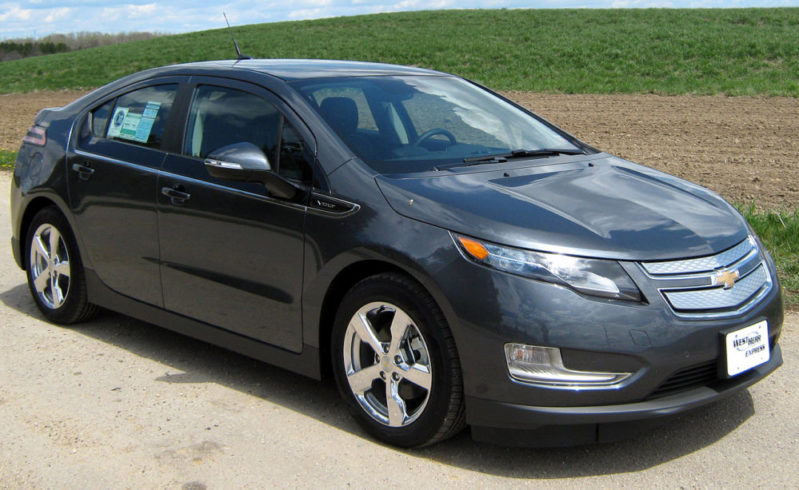 I recently wrote about how the Volt achieved the lowest fatality rate ever for a small car in the IIHS’ driver death rate surveys. The estimate of 7 suggests that if 1 million drivers put our staggeringly high annual mileage of 13,476 on 1 million ’11-’14 Volts, only 7 of those drivers would have died at the end of a full year. That’s as good as it gets for a small car right now; the only cars that have scored better in estimates are a precious few mid-sized and large models. Due to its batteries and internal combustion engine, it weighs a porky 3,781 lbs.
I recently wrote about how the Volt achieved the lowest fatality rate ever for a small car in the IIHS’ driver death rate surveys. The estimate of 7 suggests that if 1 million drivers put our staggeringly high annual mileage of 13,476 on 1 million ’11-’14 Volts, only 7 of those drivers would have died at the end of a full year. That’s as good as it gets for a small car right now; the only cars that have scored better in estimates are a precious few mid-sized and large models. Due to its batteries and internal combustion engine, it weighs a porky 3,781 lbs.
2011-2014 Nissan Leaf – 8 driver deaths (0-44)
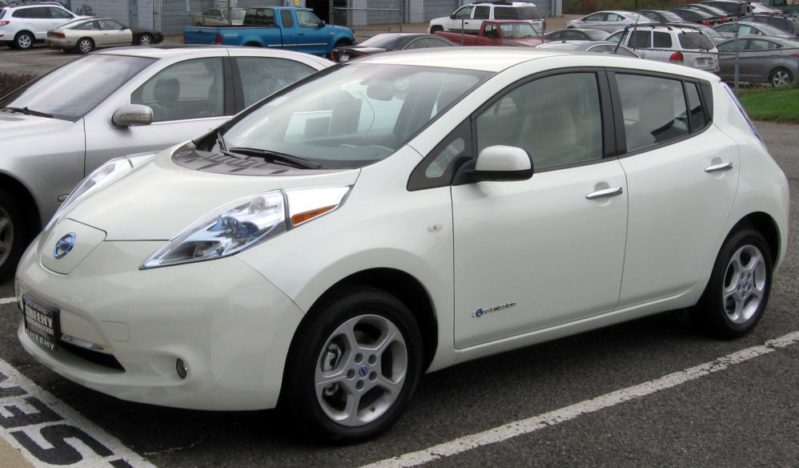 In a statistical dead heat with the Volt is the Nissan Leaf, which achieved a driver death rate of 8, the lowest yet estimated by the IIHS for an electric vehicle and the second lowest fatality estimate ever made for a small car. As noted in that article, due to the overlapping confidence intervals, it’s entirely possible it shares the same true driver death rate with the Volt; it’s even possible that true driver death rate might be zero. Pretty impressive for a car that costs under $10,000 in the used market and will never, ever need gasoline. With its battery pack, it weighs roughly 3,375 lbs.
In a statistical dead heat with the Volt is the Nissan Leaf, which achieved a driver death rate of 8, the lowest yet estimated by the IIHS for an electric vehicle and the second lowest fatality estimate ever made for a small car. As noted in that article, due to the overlapping confidence intervals, it’s entirely possible it shares the same true driver death rate with the Volt; it’s even possible that true driver death rate might be zero. Pretty impressive for a car that costs under $10,000 in the used market and will never, ever need gasoline. With its battery pack, it weighs roughly 3,375 lbs.
2011-2014 Mini Cooper Countryman 2WD – 10 driver deaths (0-53)
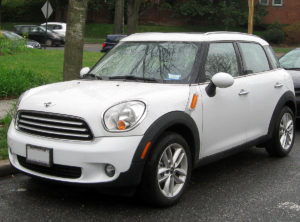 The Mini Countryman is yet another station-wagon styled small car that matched or bettered a bevy of much heavier and larger vehicles with its driver death rate of 10. The larger sibling of the venerable Mini Cooper (which did not appear on the death rate survey due to low sales), it’s also the first vehicle on this list to feature a fully internal combustion engine. It weighs a svelte 3,208 lbs.
The Mini Countryman is yet another station-wagon styled small car that matched or bettered a bevy of much heavier and larger vehicles with its driver death rate of 10. The larger sibling of the venerable Mini Cooper (which did not appear on the death rate survey due to low sales), it’s also the first vehicle on this list to feature a fully internal combustion engine. It weighs a svelte 3,208 lbs.
2012-2014 Subaru Impreza 4WD Wagon – 12 driver deaths (3-36)
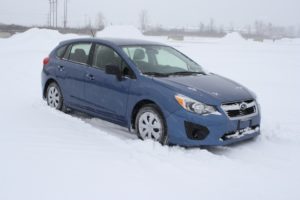 While the Outback is undoubtedly the most famous Subaru and by far their most popular wagon, the little Impreza actually equaled it in driver safety with an identical driver death rate of 12. Not bad for a vehicle that costs several thousands less than its flagship mark sibling. And with overlapping confidence intervals, it’s just as safe as not only the Outback, but the Legacy and Forester too. It weighs around 3,241 lbs.
While the Outback is undoubtedly the most famous Subaru and by far their most popular wagon, the little Impreza actually equaled it in driver safety with an identical driver death rate of 12. Not bad for a vehicle that costs several thousands less than its flagship mark sibling. And with overlapping confidence intervals, it’s just as safe as not only the Outback, but the Legacy and Forester too. It weighs around 3,241 lbs.
2012-2014 Fiat 500 – 13 driver deaths (0-26)
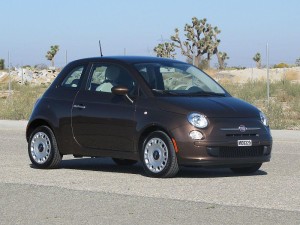 The tiny Fiat 500 is the smallest car on this list, yet it kept its drivers as safe any of the vehicles already mentioned, and several huge monsters we’ll review in a minute. It weighs a scant 2,533 lbs.
The tiny Fiat 500 is the smallest car on this list, yet it kept its drivers as safe any of the vehicles already mentioned, and several huge monsters we’ll review in a minute. It weighs a scant 2,533 lbs.
Now that we’ve looked at 5 small and light cars with exceptionally low driver death rates, let’s compare them to 5 cars, SUVs, minivans, and pickup trucks that weigh much more, yet didn’t provide any more protection to their drivers–to hundreds of thousands of them who drove around the United States under the same conditions and on the same roads.
Much larger vehicles can offer much worse protection (or at least no better)
2011-2014 Ford Taurus 2WD – 40 driver deaths (23-60)
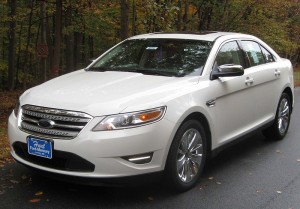 Our token large car, the Ford Taurus, was the most popular large car sold in the US during the surveyed years for the driver death rate study. However, although the Taurus weighs roughly 4,224 lbs, it didn’t provide any more protection than vehicles weighing hundreds to thousands of pounds less. Despite the higher driver death rate, we can’t say the Taurus was less safe than any of the aforementioned vehicles, as its confidence intervals overlapped with all of them. What that does allow us to state, though, is that it did not offer any advantage whatsoever, statistically speaking, over any of those vehicles when it came to keeping its drivers alive.
Our token large car, the Ford Taurus, was the most popular large car sold in the US during the surveyed years for the driver death rate study. However, although the Taurus weighs roughly 4,224 lbs, it didn’t provide any more protection than vehicles weighing hundreds to thousands of pounds less. Despite the higher driver death rate, we can’t say the Taurus was less safe than any of the aforementioned vehicles, as its confidence intervals overlapped with all of them. What that does allow us to state, though, is that it did not offer any advantage whatsoever, statistically speaking, over any of those vehicles when it came to keeping its drivers alive.
2011-2014 Chevrolet Suburban 1500 4WD – 39 driver deaths (11-67)
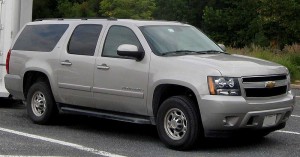 I recently profiled the Suburban in a comparison article with the Cruze, where I showed how, despite it being a much larger and heavier vehicle, it didn’t provide any additional driver protection as measured by driver survival rates compared to the Cruze. As a result, it was a perfect candidate for the token large SUV in this article. Despite weighing a hefty 6,551 lbs on the high end, it didn’t protect its drivers any better than vehicles weighing up to 4,000 pounds less.
I recently profiled the Suburban in a comparison article with the Cruze, where I showed how, despite it being a much larger and heavier vehicle, it didn’t provide any additional driver protection as measured by driver survival rates compared to the Cruze. As a result, it was a perfect candidate for the token large SUV in this article. Despite weighing a hefty 6,551 lbs on the high end, it didn’t protect its drivers any better than vehicles weighing up to 4,000 pounds less.
2011-2014 Ford F-250 Crew Cab 4WD – 35 driver deaths (22-27)
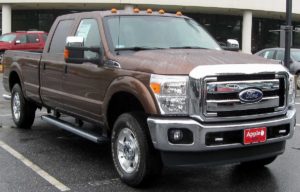 The 4WD Crew Cab trim of the F-250 will be our token large pickup truck, as it was the most popular sold in the US during the driver death rate survey years. The high sales rate is reflected in its narrow confidence interval. However, despite weighing a formidable 6,940 lbs on the high end, it was no safer than vehicles weighing up to 4,400 pounds less.
The 4WD Crew Cab trim of the F-250 will be our token large pickup truck, as it was the most popular sold in the US during the driver death rate survey years. The high sales rate is reflected in its narrow confidence interval. However, despite weighing a formidable 6,940 lbs on the high end, it was no safer than vehicles weighing up to 4,400 pounds less.
How can so many big cars be no safer than tiny ones for my family?
There are a few things to keep in mind to help explain these findings. First of all, it’s essential to remember that the three factors in auto safety involve how we drive and where we drive in addition to what we drive. No matter what you’re driving, it’s only one third of the equation. And there isn’t a vehicle on the road today that can stop you from accelerating into a bridge column while drunk, or switching lanes into the path of a semi-trailer after falling asleep. The roads you choose, the speeds you use, the times you drive, the miles you log, the tires you install (or don’t), the car seats you buckle your children into (hint: do what the Swedes do!)…it all adds up to far more than the vehicles themselves.
Compared to a semi-truck, we’re all driving small, tiny cars, SUVs, minivans, and pickups

Beyond all of this, it’s essential to remember that no matter what you drive, if it’s a standard passenger vehicle, it’s massively outweighed by the many large trucks and buses that populate our highways. A semi-trailer can weigh up to 80,000 pounds. A dump truck can weigh more than 60,000 pounds. The roads are filled with these vehicles. It doesn’t matter whether you’re hit by a vehicle that weighs 10x more than yours (e.g., a 70,000 pound truck crashing into a 7,000 Ford Super Duty) or a vehicle that weighs 20x more than yours (e.g., the same 70,000 pound truck crashing into a 3,300 lb Subaru); once the mass differential exceeds around 1.5x and your speeds exceed around 50 mph, you’re probably going to die. And if you increase the speeds to what most people consider highway speeds (e.g., 65-85 mph), you’re going to die in a head-on collision with pretty much anything larger than a motorcycle.
We can’t protect ourselves with size and mass
The solutions lie in changing how and where we drive. Choose safe speeds, follow best practices with car seats, and choose safe roads, and you can achieve a better family survival rate than that you’d get from choosing any passenger vehicle on this list, or on any other list.
 If you find my information on best practices in car and car seat safety helpful, you can buy my books here or do your shopping through this Amazon link. Canadians can shop here for Canadian purchases. Have a question or want to discuss best practices? Send me an email at carcrashdetective [at] gmail [dot] com.
If you find my information on best practices in car and car seat safety helpful, you can buy my books here or do your shopping through this Amazon link. Canadians can shop here for Canadian purchases. Have a question or want to discuss best practices? Send me an email at carcrashdetective [at] gmail [dot] com.

